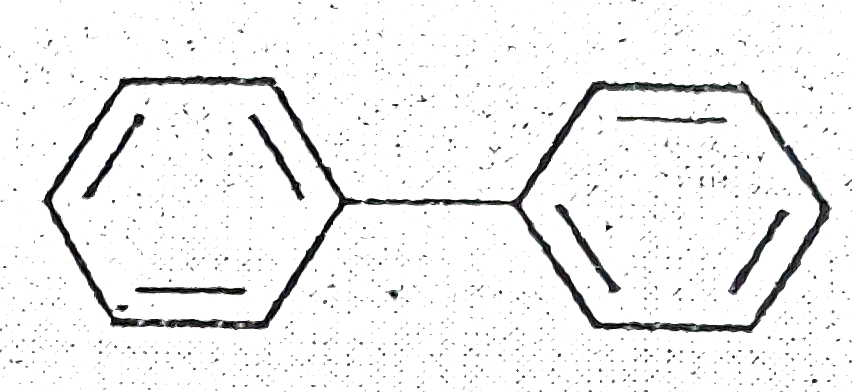How would you decide whether the two given compounds are homologues or not?
To determine whether two given compounds are homologues, follow these steps:
Step 1: Identify the Compounds
Start by clearly identifying the two compounds you are comparing. Write down their molecular formulas.
Step 2: Check the General Formula
Determine if both compounds follow the same general formula for their respective homologous series. For example, for alkanes, the general formula is CnH2n+2, for alkenes it is CnH2n, and for carboxylic acids, it is CnH2nO2.
Hint: Look for a pattern in the molecular formulas. For example, if both compounds are carboxylic acids, they should fit the CnH2nO2 formula.
Step 3: Compare the Difference in Molecular Formula
Examine the difference in the molecular formulas of the two compounds. They should differ by a CH2 unit (or a multiple of CH2). This means that if you subtract the molecular formula of one compound from the other, the result should be a multiple of CH2.
Hint: Calculate the difference in the number of carbon (C) and hydrogen (H) atoms. If the difference is one carbon and two hydrogens (CH2), they are likely homologues.
Step 4: Check for the Same Functional Group
Verify if both compounds have the same functional group. For example, if both compounds are acids, they should both contain the carboxylic acid (-COOH) group.
Hint: Identify the functional groups present in each compound. If they are the same, that’s a good indication they are homologues.
Step 5: Compare Chemical Properties
Finally, consider the chemical properties of the compounds. Homologues typically exhibit similar chemical properties due to their structural similarities.
Hint: Think about reactions that the compounds might undergo. If they react similarly, it supports the idea that they are homologues.
Conclusion:
If the two compounds meet all the criteria above—same general formula, differ by CH2 unit, have the same functional group, and exhibit similar chemical properties—then you can conclude that they are homologues.
Start by clearly identifying the two compounds you are comparing. Write down their molecular formulas.
Determine if both compounds follow the same general formula for their respective homologous series. For example, for alkanes, the general formula is CnH2n+2, for alkenes it is CnH2n, and for carboxylic acids, it is CnH2nO2.
Examine the difference in the molecular formulas of the two compounds. They should differ by a CH2 unit (or a multiple of CH2). This means that if you subtract the molecular formula of one compound from the other, the result should be a multiple of CH2.
Verify if both compounds have the same functional group. For example, if both compounds are acids, they should both contain the carboxylic acid (-COOH) group.
Finally, consider the chemical properties of the compounds. Homologues typically exhibit similar chemical properties due to their structural similarities.
If the two compounds meet all the criteria above—same general formula, differ by CH2 unit, have the same functional group, and exhibit similar chemical properties—then you can conclude that they are homologues.
Topper's Solved these Questions
- ORGANIC CHEMISTRY : SOME BASIC PRINCIPLES AND TECHNIQUES BOOK - ICSECHAPTER - ORGANIC CHEMISTRY : SOME BASIC PRINCIPLES AND TECHNIQUES EXERCISE - ESSAY ( LONG ANSWER ) TYPE QUESTIONS
42 Videos
- ORGANIC CHEMISTRY : SOME BASIC PRINCIPLES AND TECHNIQUES BOOK - ICSECHAPTER - ORGANIC CHEMISTRY : SOME BASIC PRINCIPLES AND TECHNIQUES EXERCISE - OBJECTIVE ( MULTIPLE CHOICE ) TYPE QUESTIONS
142 Videos
- ORGANIC CHEMISTRY : SOME BASIC PRINCIPLES AND TECHNIQUES BOOK - ICSECHAPTER - ORGANIC CHEMISTRY : SOME BASIC PRINCIPLES AND TECHNIQUES EXERCISE - VERY SHORT ANSWER TYPE QUESTIONS
87 Videos
- HYDROGENBOOK - ICSECHAPTER - HYDROGENEXERCISE - NCERT TEXT-BOOK EXERCISE (With Hints and Solutions)
53 Videos
- REDOX REACTIONS (OXIDATION AND REDUCTION)BOOK - ICSECHAPTER - REDOX REACTIONS (OXIDATION AND REDUCTION)EXERCISE - NCERT TEXT-BOOK. EXERCISES ((With Hints and Solutions)
69 Videos
Similar Questions

State whether the given compound is aromatic or not.
View SolutionHow would you define polluted water ?
View SolutionHow would you convert the Ethyne compounds into benzene?
View SolutionHow would you convert :
Ethylene to ethane.
View SolutionHow would you prepare ethene from ethanol
View SolutionHow would you convert acetylene to acetone?
View SolutionHow will you test whether a given rod is a magnet or not?
View SolutionHow will you test whether a given rod is made of iron or not?
View SolutionWrite two tests you would perform to detect, whether the given colourless liquid is Acetic Acid or not.
View SolutionHow would you convert :
Ethylene to ethylene ozonide.
View Solution
